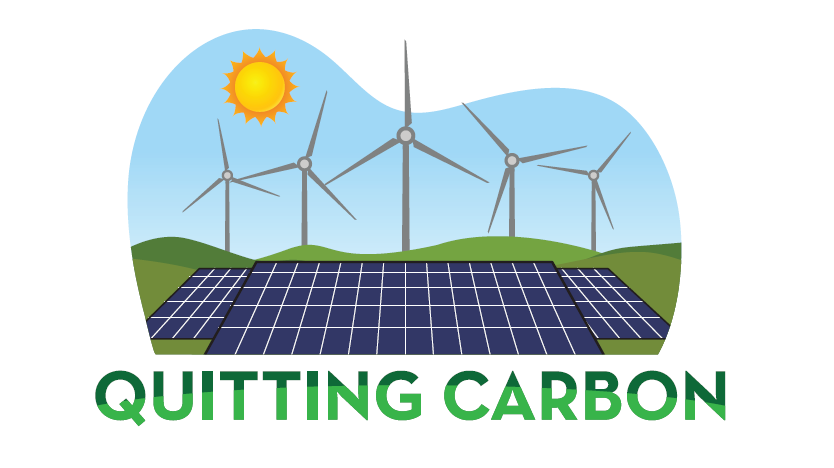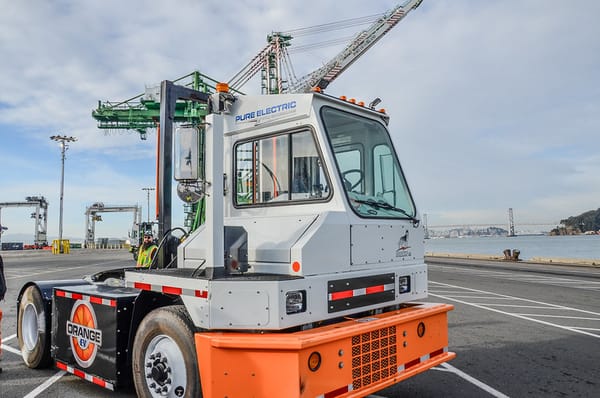Trump claims offshore wind is worthless. This project proves the opposite is true.
South Fork Wind, the U.S.’ first commercial-scale offshore wind farm, is demonstrating the folly of the Trump’s administration’s misguided war on offshore wind.
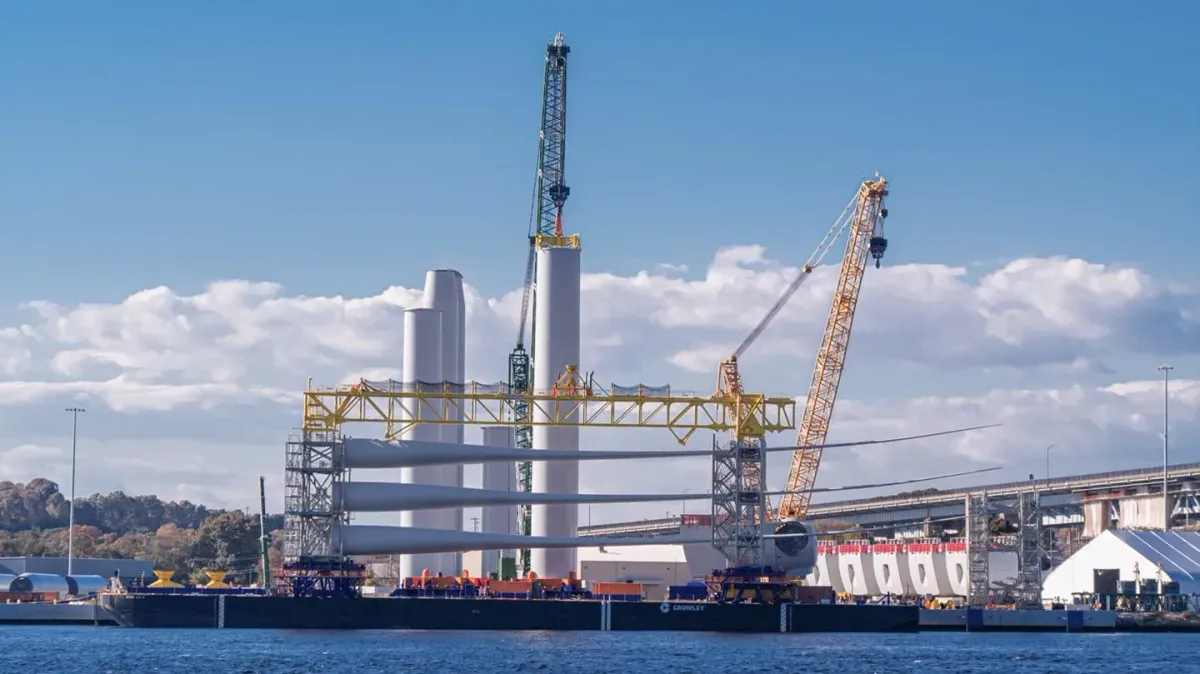
Quitting Carbon is a 100% subscriber-funded publication. To support my work, please consider becoming a paid subscriber or making a one-time donation.
President Donald Trump and his minions in the Cabinet would have you believe that offshore wind projects aren’t worth building.
Interior Secretary Doug Burgum went on CNBC earlier this month to say that "you don’t know when the wind’s gonna blow."
"Secretary Burgum is in agreement with President Donald Trump that protecting our energy security means ensuring the American people aren’t reliant on designed to fail energy sources, such as wind, which is why the Department of the Interior recently ended special treatment for these unreliable energy sources,” Interior Department spokesperson Aubrie Spady told Climate Wire’s Scott Waldman.
Unreliable? Hardly.
The truth is the Trump administration’s war on offshore wind is not just misguided; it is being waged despite evidence proving that the technology is already providing benefits to ratepayers and to the grid in the Northeast.
This summer marked one year since the Danish energy giant Ørsted turned on South Fork Wind, the nation’s first commercial-scale offshore wind farm, off the coast of Long Island, New York. The project, which includes a dozen 11-megawatt turbines, has been fully operational since July 2024. Ørsted built South Fork Wind in a 50/50 partnership with Eversource Energy.
Contrary to Trump and Burgum’s sky-is-falling rhetoric, the performance of South Fork Wind thus far is reinforcing why offshore wind capacity is so valuable, especially in regions like the Northeast where available land onshore is scarce.
"In its first full year of operation, South Fork achieved a 46.4% net capacity factor," according to a report published last Friday by Ørsted.
"South Fork Wind achieved a 53% net capacity factor for the first half of 2025 – comparing favorably to the latest annual U.S. EIA data [for] New York's natural gas plants (53%), land-based wind farms (22%) and PV solar (16%)," Kevin Hansen, Ørsted’s head of government and market affairs, New York, wrote on LinkedIn last week.
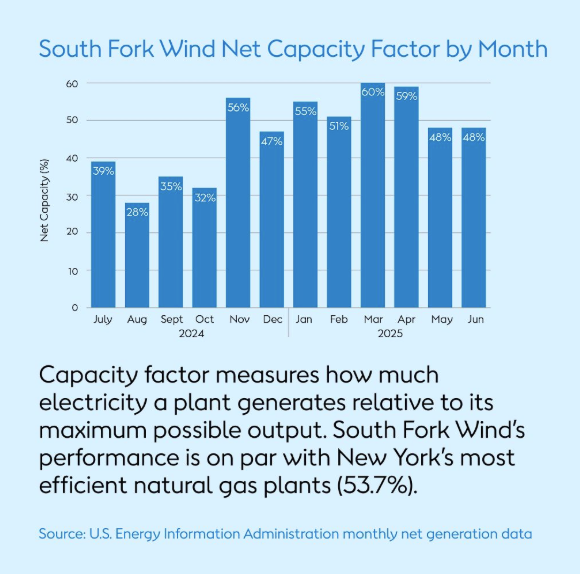
According to Ørsted, not only is South Fork Wind matching the annual uptime of the Trump administration’s most-favored energy resource, fossil gas-fired power plants, it is also delivering power to the grid when it is needed most.
"When a record-breaking heat wave caused the NYISO to declare a major grid emergency in the early evening of June 24, South Fork Wind delivered at an 87% net capacity factor," wrote Hansen. Overall, the project generated power for the grid 92% of the time during the first half of this year.
"While South Fork averaged solid energy production throughout each month in its first year, offshore wind output tends to peak during winter months, when natural gas demand for heating is highest," according to the new Ørsted report. "The project also generates more electricity in the afternoon and evening, complementing solar energy’s daytime and summer production well. This generation pattern bolsters year-round grid stability and helps to meet daily peak load during the late afternoon."
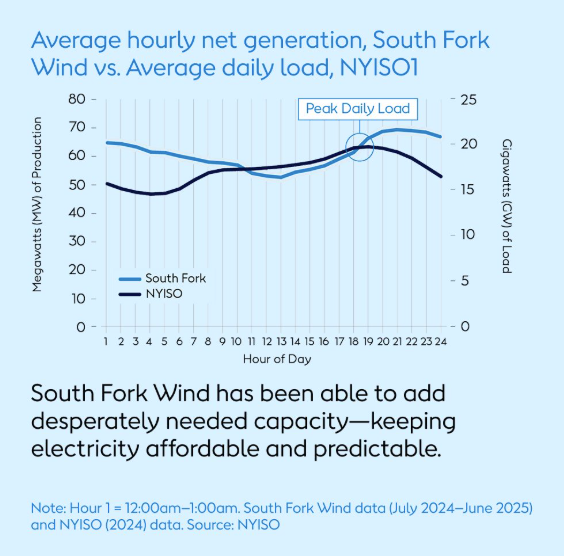
Offshore wind is already proving to be a much-needed resource for New England grid operators. But what about its supposedly ruinous economics?
"Under this administration, there is not a future for offshore wind because it is too expensive and not reliable enough," Burgum told an audience at the Gastech conference in Milan, Italy, earlier this month.
But here again, as I wrote last week, the administration is dead wrong.
"If the 3.5 GW [gigawatts] of wind energy projects currently contracted offshore New England had been operational last winter, it could have offset the surge in natural gas prices that season and saved ratepayers a total of $400 million on their energy bills," Utility Dive’s DiGangi wrote last month about a report from Daymark Energy Advisors.
Katherine Hamilton, the co-host of Latitude Media’s "Open Circuit" podcast, noted on the show’s September 12 episode that Health and Human Services Secretary Robert F. Kennedy Jr. has claimed that electricity from U.S. offshore wind projects costs as much as 34 cents a kilowatt-hour.
"It’s not," said Hamilton. "The fixed price contracts are between seven and 15 cents a kilowatt-hour. Revolution Wind is 9.80 cents a kilowatt-hour. That is not 34 cents a kilowatt-hour."
The administration's dishonesty about offshore wind should not come as a surprise.
"The Trump administration is really just relying on political talking points to push back on renewable energy that have little or no basis in fact," Dave Anderson, policy and communications manager for the Energy and Policy Institute, a watchdog organization focused on the fossil fuel and utility industries, told Canary Media's Kathiann M. Kowalski last month.
As Burgum made clear, if the Trump administration has its way, offshore wind won’t have a future in the United States.
But the fanatical zeal with which the White House is waging its war against offshore wind is a tell. The administration – and its fossil fuel allies – know a threat when they see it, and they’re trying to kill the offshore wind industry before it’s as immovable as a turbine foundation pounded into the seabed.


